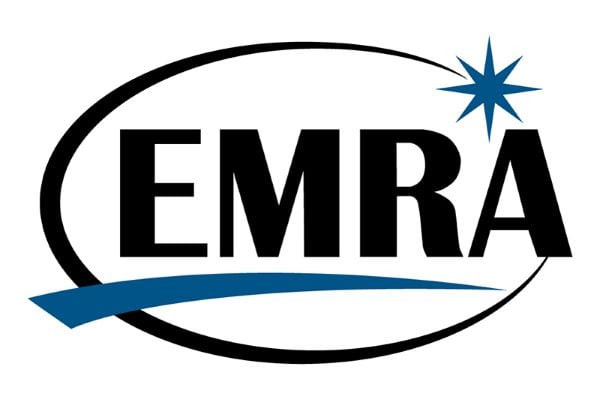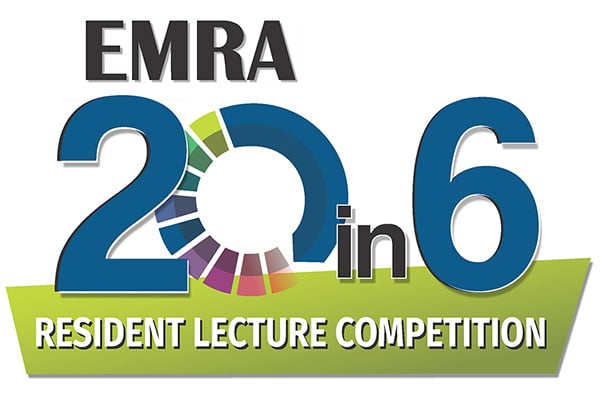Do’s and Don'ts: Applying to EM as a DO Student
J. Richard Dowd, OMSIII, Ohio University Heritage College of Osteopathic Medicine - Dublin
EMRA MSC Great Lakes Regional Representative 2019-20
The single match is here! By now you’ve probably found that if you ask ten different people, you’ll get ten different responses as to what that actually means for osteopathic students’ prospects in The Match. Furthermore, with several DO-friendly programs closing within the last year, most notably Drexel/Hahnemann in Philadelphia and more recently Ohio Valley Medical Center, it is easy to understand why DO candidates may be feeling some uncertainty. However, it is important to remember that based on the 2018 Program Director Survey, 81% of programs typically interview and rank osteopathic applicants,1 a significant increase from 68% in 2012.
Here are our six key do’s and don’ts, based on previously successful DO applicants, that can help maximize your chances of matching into EM. For more thorough guides, check out the EMRA CORD Student Advising Guide [PDF] and CORD’s Osteopathic Emergency Medicine Applying Guide [PDF].
1. DON’T skip USMLE Step 1
I’ll try not to beat a dead horse as the reasons for taking USMLE in addition to COMLEX have been explored elsewhere. In short, that 81% figure referenced earlier drops precipitously without a Step score. Many historically ACGME-accredited programs are less familiar with interpreting COMLEX or simply prefer a single number to compare applicants from allopathic and osteopathic schools. Ideally, Step 2CK should be taken as well. But if choosing between one or the other, choose Step 1.2 That said, there are still many programs who will take DOs with only a COMLEX score. Therefore, it is imperative to do your homework in order to find these programs if you opt to proceed with only COMLEX.
2. DO your homework
A good place to start when searching for DO-friendly EM programs is the ACGME List of programs that applied for single accreditation. These are programs that were historically part of the AOA match and are largely comprised of DOs. They are also more likely to only require a COMLEX score for those applying without a USMLE score. Furthermore, they are great places to seek out mentorship as they tend to be the most familiar with our training and the obstacles we face in matching into EM.
Beyond the former AOA programs, the EMRA Match app is your best bet to sort through all of the programs efficiently. The app allows you to filter 256 programs based on a variety of factors including program length, minimum score cutoffs, ED volume, and average shift length, among others. Most importantly for this discussion, it allows you to sort based on the percentage of DO residents. Obviously, programs with a greater proportion of DOs currently in training are where you will see the most success when applying for auditions and ultimately matching. That is not to say you should write off programs with only one or two DOs; these programs will just require more work on your end in assessing your competitiveness.
3. DO attend a conference
There is no substitution for face-to-face time with programs of interest and this is especially true for DO applicants. Attending a conference is a great way to “put a face” to your application while having your questions answered by representatives from multiple programs all in one place. General questions such as “do you take DOs?” should be avoided unless it’s not readily apparent based off your preliminary research. In contrast, doing your homework ahead of time and asking questions that aren’t readily answered via a quick search of program websites can demonstrate your interest and set you apart, potentially opening doors down the road. Here is a good place to start for those types of questions.
4. DO seek mentorship
One hurdle facing many osteopathic students is the lack of access to a dedicated EM faculty advisor.3 This can be overcome by reaching out to the nearest EM program, your state’s ACEP chapter, or attending a conference such as the ACEP Scientific Assembly.
In addition to the feedback provided by EM faculty, a senior classmate or recent graduate can be another great source of advice. They have a fresh take on the process and can help you avoid pitfalls that they encountered. Moreover, you can bounce questions off them that you might not feel comfortable asking program directors. Hopefully, you have developed these relationships through your EMIG or other school functions. But, if not, it is worth contacting an administrator at your school for a recent match list and reaching out to students who matched into programs in which you may be interested.
Outside of your classmates, EMRA’s Student-Resident Mentorship Program is an excellent way to be put in touch with a nearby resident to bounce questions off of and receive further guidance.
5. DO give careful consideration as to where you audition
Beginning in the fall of your third year, you should start to narrow down your list of programs where you’d like to audition. Once again, the EMRA Match app (‘Clerkship’ button in the top left) is a great place to start by filtering programs based on region, acceptance of DO applicants, and program type. Most programs will begin accepting applications through VSLO/VSAS in the early spring. However, there is no uniform date across all programs and some require you to apply directly. So, again, do your homework. Plan on applying to three programs for each month that you plan on rotating in order to ensure you secure a spot.4
Aim for two month-long auditions at sites with an established residency program where you will be able to secure a SLOE. Using the recommendation from above, this will require you to apply to six programs in total: three for each month you plan on auditioning. These should be sites that, based on your prior research, you can envisage yourself matching to and excelling at.
Make sure to have at least one audition scheduled to be complete by mid-August in order to have at least one SLOE ready when applications open in September. You might consider a third audition if there’s a reach program you’d like to try out or if you’re a borderline candidate, but no more than three! Additionally, keep geography in mind when auditioning. If you ultimately want to match in the midwest, don’t schedule both auditions out west!
Remember, the audition is your one chance to demonstrate your clinical acumen, your ability to work well with others, and your teachability, with many faculty reporting that the latter two components carry as much or more weight than your clinical knowledge. The subsequent SLOEs you will receive are routinely cited by Program Directors as the most important factor when deciding who to interview.1 Apply wisely, try hard, and have fun!
6. DON’T apply to more than 40 programs
It’s mid-September of fourth year. You’ve rocked your auditions and secured your glowing SLOEs. Now it’s time to apply for real. Generally speaking, 25-40 applications are appropriate with the goal of securing 12 interviews. Stronger applicants will likely be fine with fewer, while borderline applicants will need to apply a little more broadly. The EMATCH Tool is a quick way to assess your basic competitiveness but this topic really warrants time spent sitting down with your dedicated advisor (from above) to assess your individual circumstances. Applying to more than 40 programs does not confer an increased chance of matching, statistically speaking. The end goal is to secure approximately 9-12 interviews, as ranking 9-12 programs gives one a 90-95% chance of matching.2
EM has historically been a “DO-friendly” specialty and there’s no reason to think that will change after the implementation of single accreditation - even if it means a little extra planning, research, and some additional sweat on our end. By applying these evidence-based do’s and don’ts you will help level the playing field in the post-single accreditation match and subsequently increase your chances of successfully matching into EM.
References
- National Resident Matching Program. National Resident Matching Program, Data Release and Research Committee: Results of the 2018 NRMP Program Director Survey. 2018. [Accessed October 6, 2019].
- Stobart-Gallagher M, Smith L, Giordano J, et al. Recommendations from the Council of Emergency Medicine Residency Directors: Osteopathic Applicants. West J Emerg Med. 2019 Jan; 20(1): 111-116.
- Stobart-Gallagher M, O’Connell A. Preparing Osteopathic Students for the Single Graduate Medical Education Accreditation System: Evaluating Factors for Match Success in Emergency Medicine. West J Emerg Med. 2018 Sep; 19(5): 820-824.
- Cacchillo, J (host). Special Populations Series: DOs & Orphans. EMRA Hangouts. 2019 Sep 26.






